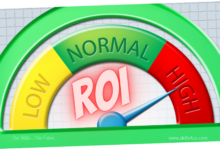
Competency-Based Talent Management Strategy Develops The Employees’ Capabilities To Meet Organizational Competency Requirements
Talent development is critical to growing organizations that see the human resource as their greatest asset. Focusing on developing their talent pool results in an outstanding employee experience and increases the organization’s overall performance and productivity. Thus, to successfully find and retain the best talent, a competency-based talent management strategy is needed that speaks to each stage of the employee life cycle. It is, therefore, worthwhile to develop and use a good competency framework to implement a comprehensive talent management strategy. While performance management systems allow for competencies to be reviewed, the organization can demonstrate the effectiveness of other systems, such as recruitment, learning, and development. Thus, aligning staffing, learning and development, and performance management will help manage individuals’ professional careers and prepare them for more significant roles in the organization’s succession efforts.
Competency Framework
Simply put, a competency framework is an overarching structure that includes a set of behaviors, skills, abilities, and attributes that an organization considers essential to creating a high-performance culture. As a result, the standard against which an individual’s potential and performance are evaluated is formed. It also provides the starting point for applying competency to job descriptions, assessments, development strategies, and succession planning. Thus a competency framework can be implemented at all stages of talent development or the employee life cycle within an organization. Further, under the implementation of a competency-based talent management strategy, service effectiveness, and impact can be measured against the organization’s mission and expected results; The individual employee’s performance can be measured against the performance objectives and competencies required by the organization.
How to implement a competency-based talent management strategy
1) Integration of competency framework and selection
When creating the competency framework, it is necessary to define the existing job roles according to the new framework to identify the competencies necessary for performance in each job. Thus, creating or updating comprehensive job descriptions to apply to the selection process is possible. Ultimately, suppose the competency framework and selection are integrated across the employee life cycle. In that case, opportunities for wrongful recruitment and selection will be reduced, and the ability to nurture a workforce that aligns with the overall organizational vision, goals, and culture will be possible.
2) Developing employee capabilities to meet organizational efficiency requirements
The core competencies for each job role can be used as a basis for development initiatives, performance management, talent mapping, and succession planning within the organization. There are various ways to achieve this goal, including competency and feedback assessments. Thus, a competency-based talent management strategy can develop the competencies of employees to meet organizational efficiency requirements through:
- An employee development plan helps them bridge the gap between where they are now and where they want to be.
- Succession planning ensures that the organization is ready to promote and develop all employees. In addition to smooth and uninterrupted business continuity after important people move to new opportunities.
- A performance development plan that helps improve employee performance and productivity.
Advantages of implementing a competency-based talent management strategy
- Competencies are observable, measurable, and objective for human capital performance.
- Candidates may be selected based on the behaviors and skills required for success.
- The competency standard can help explore more about the capabilities and behaviors of candidates.
- Competencies can be used to measure performance on an ongoing basis.
- The exact target scale can measure potential initial competencies and the performance of the following competencies.
- Competencies and associated behavioral indicators clearly guide professional development initiatives.
- Competency-based job descriptions provide clear job objectives for expected performance.
Implementing a competency-based talent management strategy can inform and drive every stage of talent development for fast-growing organizations. Thus, detectable, and measurable high levels of performance can be achieved.



